Table of Contents[Hide][Show]
- Nutrivore Score for Skipjack Tuna – 645
- Skipjack Tuna Nutrition Facts
- Skipjack Tuna Nutrition Varies With Cooking and Processing
- Tuna Nutrition Varies With Type
Health Benefits of Skipjack Tuna Nutrients+−
- Skipjack Tuna Provides 118% DV EPA+DHA
- Skipjack Tuna Provides 111% DV Vitamin B3 (Niacin)
- Skipjack Tuna Provides 381.8 mg of Taurine
- Skipjack Tuna Provides 91% DV Vitamin B12 (Cobalamin)
- Skipjack Tuna Provides 76% DV Selenium
- Skipjack Tuna Provides 58% DV Vitamin B6 (Pyridoxine)
- Skipjack Tuna Provides 25.3 g of Protein
- Skipjack Tuna Provides 22% DV Vitamin B7 (Biotin)
- Skipjack Tuna Provides 20% DV Phosphorus
- How Much Skipjack Tuna Should We Eat Per Day?
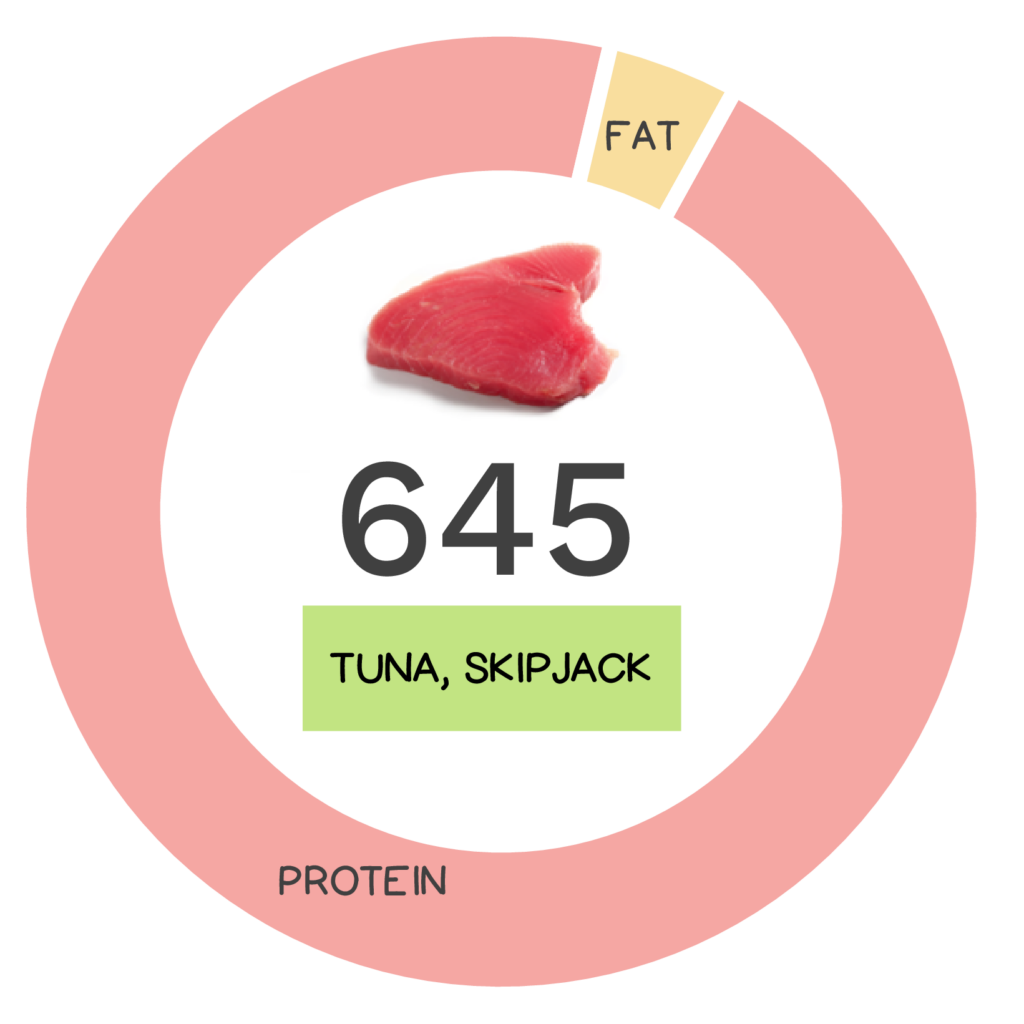
For a long time, the most popular seafood in the USA was canned tuna. Affordable, readily available, easy to work with, versatile, and popular in mainstream dishes (tuna salad anyone?), canned tuna makes for a great gateway fish for those hesitant to “dip their toe” in the waters of seafood cuisine. All that and it’s nutritious too – providing one of the few dietary sources of vitamin D in our modern food supply! What’s not to love?
Affordable, readily available, easy to work with, and versatile, canned tuna make is a great gateway fish for those hesitant to “dip their toe” in the waters of seafood cuisine!
In actuality, tuna does not refer to one specific fish but to 15 species of saltwater fatty fish spread across 5 genera, related to mackerel in the Scombridae family of fish. These fish have sleek, stream-lined bodies which makes them great swimmers. They range in size from 4 lbs (1.8 kg) to over 1500 lbs (684 kg)! Overall, they are a dark metallic blue color with a silvery or whitish underside for camouflage and are found throughout the oceans of the world, generally in tropical and temperate waters. Interestingly, they are one of the few fish that are able to maintain body temperatures above those of surrounding waters (by conserving heat produced via metabolism). Their flesh ranges in color from pink to characteristic dark red, each with its own unique taste and texture. Once considered inedible, tuna is now prized and popular all over the world but by far Japan is the biggest consumer, where fresh tuna is considered a delicacy. Tuna was first canned in Australia in the early 1900s, and today canned tuna is commonly available packaged in water, oils and sauces, either solid, chunked or flaked. Some of the most important commercial and recreational species of tuna include albacore, bigeye, bluefin, yellowfin, and skipjack.
Some of the most important commercial and recreational species of tuna include albacore, bigeye, bluefin, skipjack, and yellowfin.
Skipjack tuna (Katsuwonus pelamis) are medium-sized fish, averaging 2.6 ft (0.8 m) in length with a max weight of 76 lbs (34.5 kg), and living anywhere from 6 to 12 years. Even though this species accounts for 60% of total tuna catch, it is considered a sustainable fish, in part because skipjack reproduce early and often. Common in tropical waters throughout the world, these fish travel in large groups of up to 50,000 fish! It is popular in native Hawaiian cuisine and in Japan, where it is a key ingredient in many staple dishes. In the US, this species accounts for over 70% of canned tuna which is one of the reasons skipjack is considered the second most important captured fish in the world (after the Peruvian anchoveta – a type of anchovy).
Skipjack tuna is considered the second most important captured fish in the world (after the Peruvian anchoveta – a type of anchovy), in part because skipjack tuna accounts for over 70% of canned tuna in the United States.
Learn What Foods to *ADD* to Your Diet
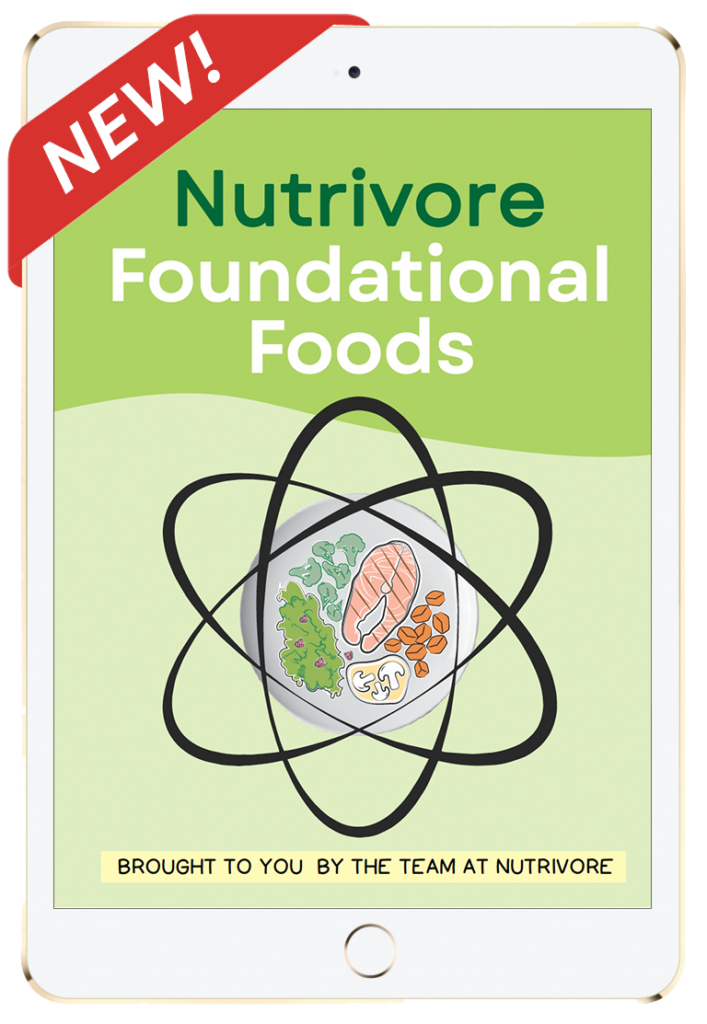
Nutrivore Foundational Foods
Learn what makes the 12 Nutrivore foundational food families nutritionally unique, their health benefits, which options are the most nutrient dense, how much of them to eat, plus various fun facts, practical pointers, and busting of common myths.
This very helpful resource will introduce you to new foods and expand your nutrition knowledge, making food choices easier!
Buy now for instant digital access.
Nutrivore Score for Skipjack Tuna – 645
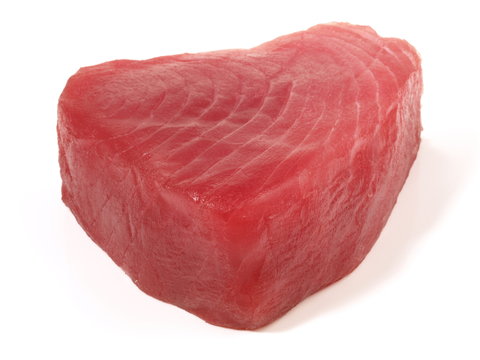
Skipjack tuna has a Nutrivore Score of 645, making it a high nutrient-dense food! Plus, it is a low-carb food; skipjack tuna has 0 grams of net carbs per 115 gram serving.
Per serving, skipjack tuna is a best source (>50% daily value) of EPA+DHA, protein, selenium, taurine, vitamin B3 (niacin), vitamin B6 (pyridoxine), and vitamin B12 (cobalamin); an excellent source (20-50% daily value) of phosphorus and vitamin B7 (biotin); and a good source (10-20% daily value) of alpha linolenic acid (ALA), copper, iodine, potassium, vitamin B5 (pantothenic acid), and vitamin D.
Ditch Diets. Embrace Nutrients. Start with this FREE Guide.
Sign up for the free Nutrivore Newsletter, your weekly, science-backed guide to improving health through nutrient-rich foods — without dieting harder —and get the Beginner’s Guide to Nutrivore delivered straight to your inbox!

Skipjack Tuna Nutrition Facts
One serving of skipjack tuna is standardized to 115 grams (4 ounces). When you cook skipjack tuna, it reduces in volume by approximately 20%: 100 grams raw skipjack tuna is equivalent to 78 grams cooked skipjack tuna.
Skipjack Tuna Nutrition Facts Per Serving
| Skipjack tuna, raw | Nutrivore Score: 645 | Nutrient Density: High |
|---|---|---|
| Serving Size: 4 ounces (115 grams) | Protein: 25.3 grams | Net Carbohydrates: 0.0 grams |
| Calories: 118 | Total Fat: 1.2 grams | Dietary Fiber: 0.0 grams |

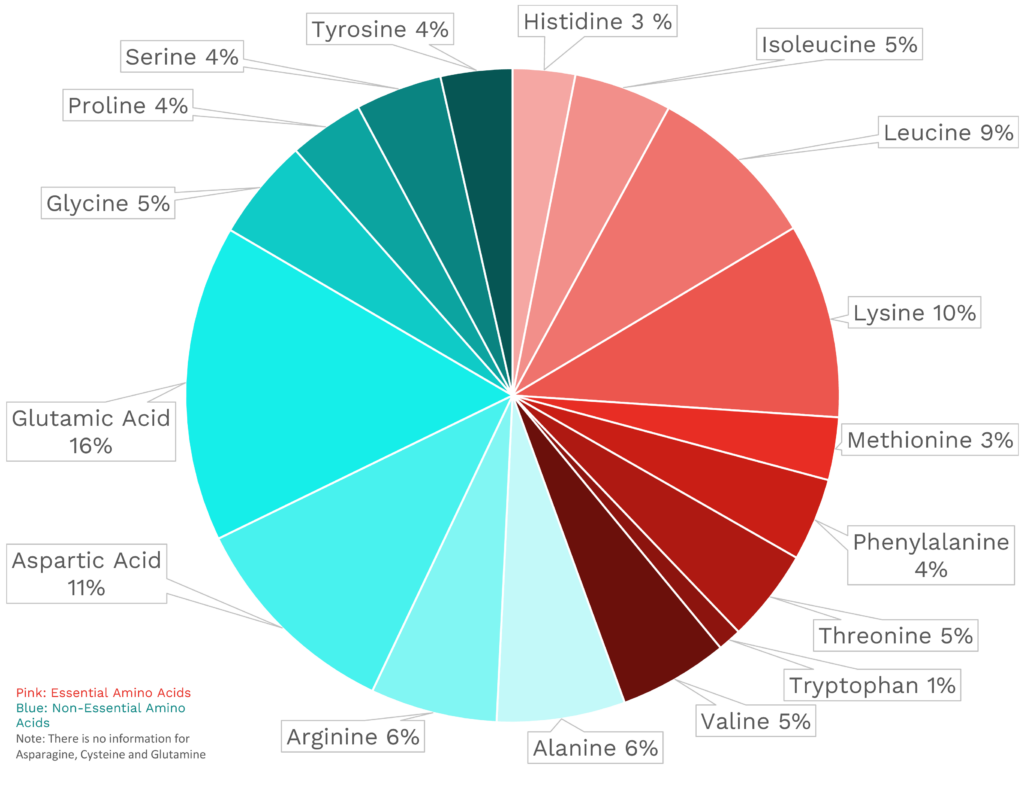
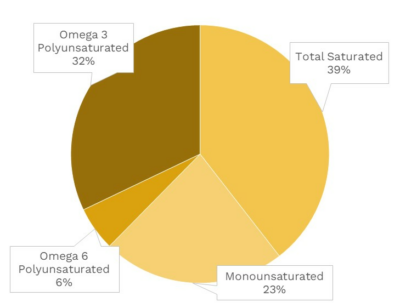
| VITAMINS | ||
|---|---|---|
| Vitamin A | 18.4 μg RAE | 2% DV |
| Vitamin B1 (Thiamin) | 38.0 μg | 3% DV |
| Vitamin B2 (Riboflavin) | 115.0 μg | 9% DV |
| Vitamin B3 (Niacin) | 17.7 mg | 111% DV |
| Vitamin B5 (Pantothenic Acid) | 0.5 mg | 10% DV |
| Vitamin B6 (Pyridoxine) | 977.5 μg | 58% DV |
| Vitamin B7 (Biotin) | 6.6 μg | 22% DV |
| Vitamin B9 (Folate) | 10.4 μg | 3% DV |
| Vitamin B12 (Cobalamin) | 2.2 μg | 91% DV |
| Vitamin C | 1.2 mg | 1% DV |
| Vitamin D (D2 + D3) | 3.2 μg | 16% DV |
| Vitamin E | 1.4 mg | 9% DV |
| Vitamin K | 3.9 μg | 3% DV |
| Choline | ~ | ~ |
| Myo-Inositol | 17.3 mg | ~ |
| CoQ10 | 0.6 mg | ~ |
| FUNCTIONAL FATS | ||
|---|---|---|
| MUFA | 0.2 g | 1% DV |
| ALA | 243.8 mg | 15% DV |
| EPA + DHA | 294.4 mg | 118% DV |
| CLA | 0.3 mg | ~ |
| Linoleic Acid | 0.0 g | 0% DV |
| MCT’s | ~ | ~ |
| MINERALS | ||
|---|---|---|
| Calcium | 33.4 mg | 3% DV |
| Copper | 98.9 μg | 11% DV |
| Iodine | 17.9 μg | 12% DV |
| Iron | 1.4 mg | 8% DV |
| Magnesium | 39.1 mg | 9% DV |
| Manganese | 17.3 μg | 1% DV |
| Phosphorus | 255.3 mg | 20% DV |
| Potassium | 468.1 mg | 10% DV |
| Selenium | 42.0 μg | 76% DV |
| Sodium | 42.6 mg | 2% DV |
| Zinc | 0.9 mg | 9% DV |
| PHYTONUTRIENTS | ||
|---|---|---|
| Carotenoids | 0.0 μg | ~ |
| Polyphenols | 0.0 mg | ~ |
| Phytosterols | 0.0 mg | ~ |
| Glucosinolates | ~ | ~ |
| Thiosulfinates | ~ | ~ |
| Betalains | ~ | ~ |
| AMINO ACIDS & PEPTIDES | ||
|---|---|---|
| Taurine | 381.8 mg | ~ |
| Ergothioneine | ~ | ~ |
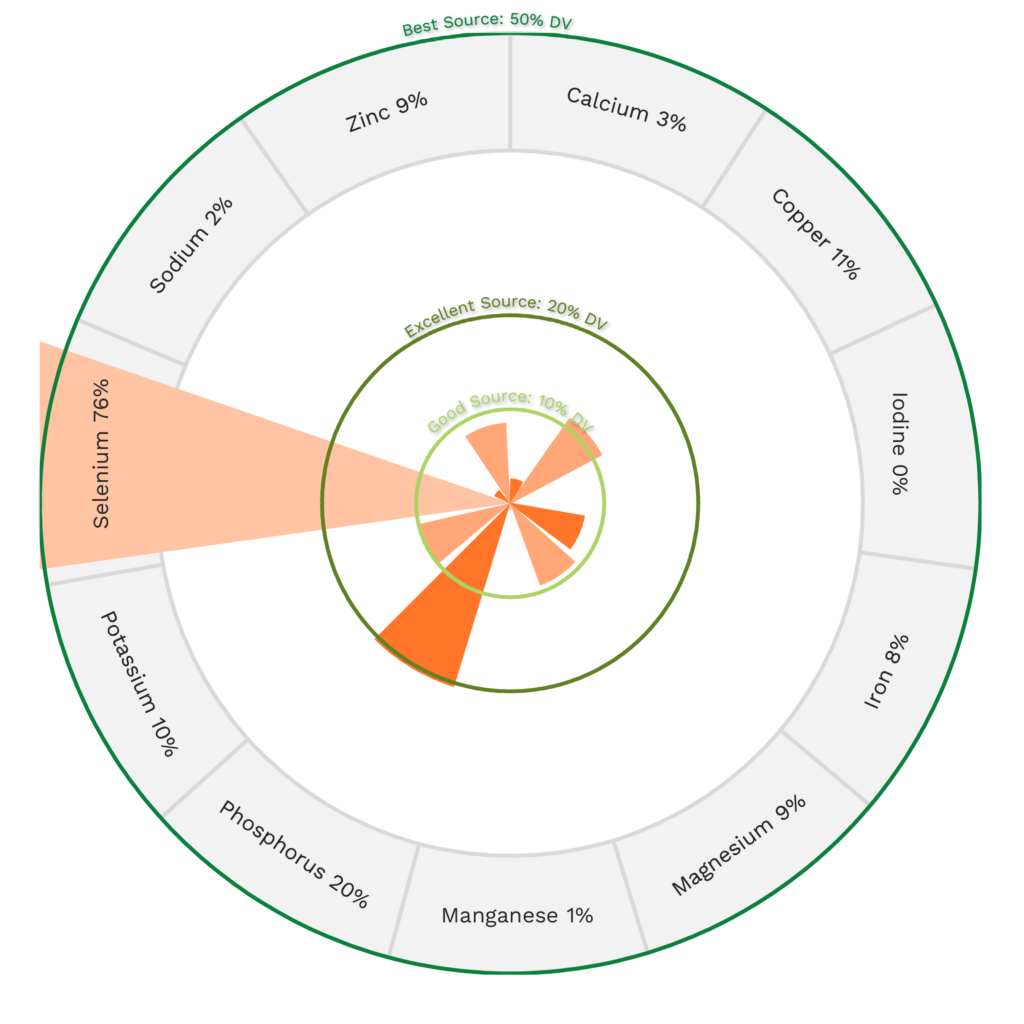
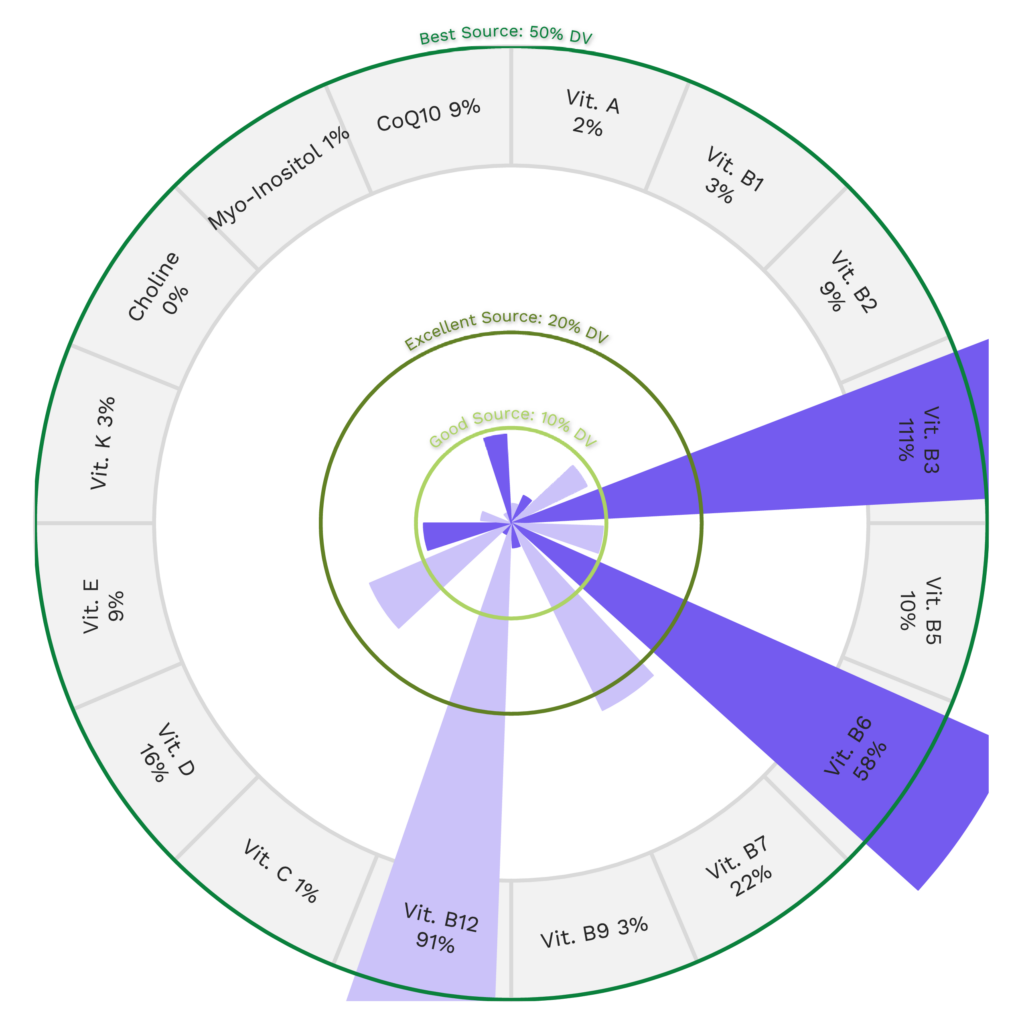
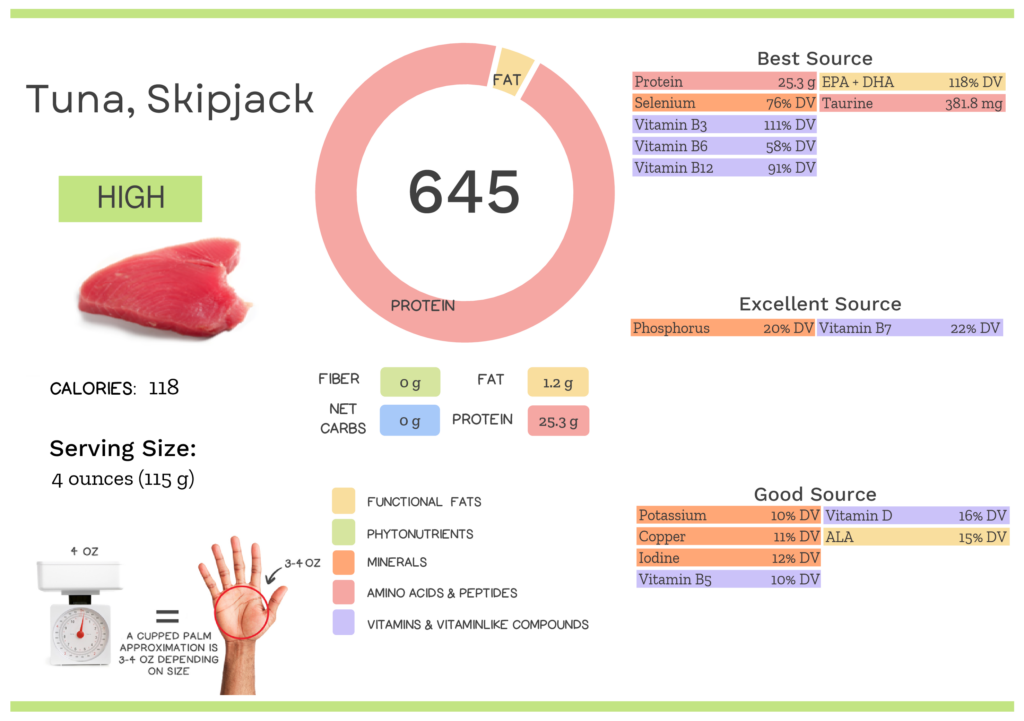

Quality Meat and Seafood
- 100% grass fed and finished beef, pasture-raised pork, pasture-raised chicken and wild-caught seafood
- Raised on regenerative family farms in the USA
- Fast delivery from our farms to your door
- Save 20% off for life, plus $15 off your first box, no coupon required
Skipjack Tuna Nutrition Varies With Cooking and Processing
The Nutrivore Score of skipjack tuna varies depending on processing and the method of preparation. For instance, canned tuna is a popular and affordable option conveniently available at any local grocery store. In the United States, skipjack tuna accounts for over 70% of canned tuna! Cans labeled as ‘light tuna’ typically contain a mix of a variety of smaller tuna species, most often skipjack (but may also include yellowfin, big-eye and tongol), while cans labeled as white tuna only contain albacore.
| NUTRIVORE SCORE | |
|---|---|
| Light tuna, canned in oil, drained solids | 334 |
| Light tuna, canned in oil, drained solids, without salt | 2741 |
| Light tuna, canned in water, drained solids | 603 |
| Light tuna, canned in water, drained solids, without salt | 5131 |
| Skipjack tuna, cooked, dry heat | 626 |
| Skipjack tuna, raw | 645 |
Tuna Nutrition Varies With Type
There are many types of tuna, each with their own unique taste and nutrient profile, which means their Nutrivore Scores also vary. To maximize all the benefits tuna has to offer, try incorporating different types into your diet. While some types of tuna are readily available fresh or frozen, other varieties may be easier to find canned (which gives them the added benefit of lower cost!)
| NUTRIVORE SCORE | |
|---|---|
| Bluefin tuna, raw | 970 |
| Skipjack tuna, raw | 645 |
| White tuna (albacore), canned in oil, drained solids | 3181 |
| White tuna (albacore), canned in oil, drained solids, without salt | 2372 |
| White tuna (albacore), canned in water, drained solids | 544 |
| White tuna (albacore), canned in water, drained solids, without salt | 5251 |
| Yellowfin tuna, raw | 642 |
Impressed by all the bene-FISH-ial nutrition in tuna? Maybe your friends will be too!
Health Benefits of Skipjack Tuna Nutrients
Let’s take a closer look at all of the best and excellent source of nutrients found in a 4-ounce serving of skipjack tuna and see how they benefit our health.
Skipjack Tuna Provides 118% DV EPA+DHA
Skipjack tuna is a fantastic source of EPA+DHA, providing 118% of the daily value per 4-ounce serving!
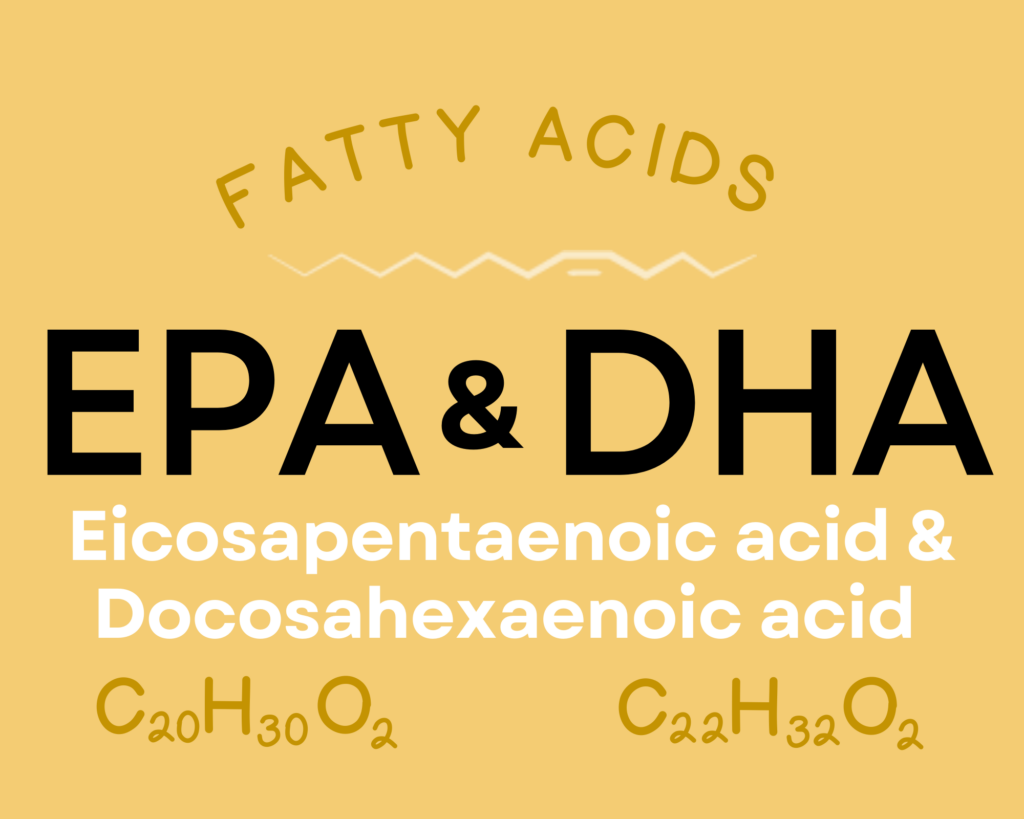
Eicosapentaenoic acid (EPA) and docosahexaenoic acid (DHA) are long-chain omega-3 fats that play important roles in neurological health, immune function, eye health and vision, inflammation, pain signaling, gut health, fetal development, and some aspects of cardiovascular health (like triglyceride levels and blood clotting). They exert many of their effects by helping form chemical messengers called prostaglandins, thromboxanes, and leukotrienes. EPA and DHA also serve as a structural component of the cell membrane, influencing important properties such as membrane fluidity and permeability. Small amounts of them can be synthesized from a shorter-chain omega-3 fat, alpha-linolenic acid (ALA). Learn more about EPA and DHA here.
Skipjack Tuna Provides 111% DV Vitamin B3 (Niacin)
Skipjack tuna is an amazing source of vitamin B3 (niacin), providing 111% of the daily value per 4-ounce serving!
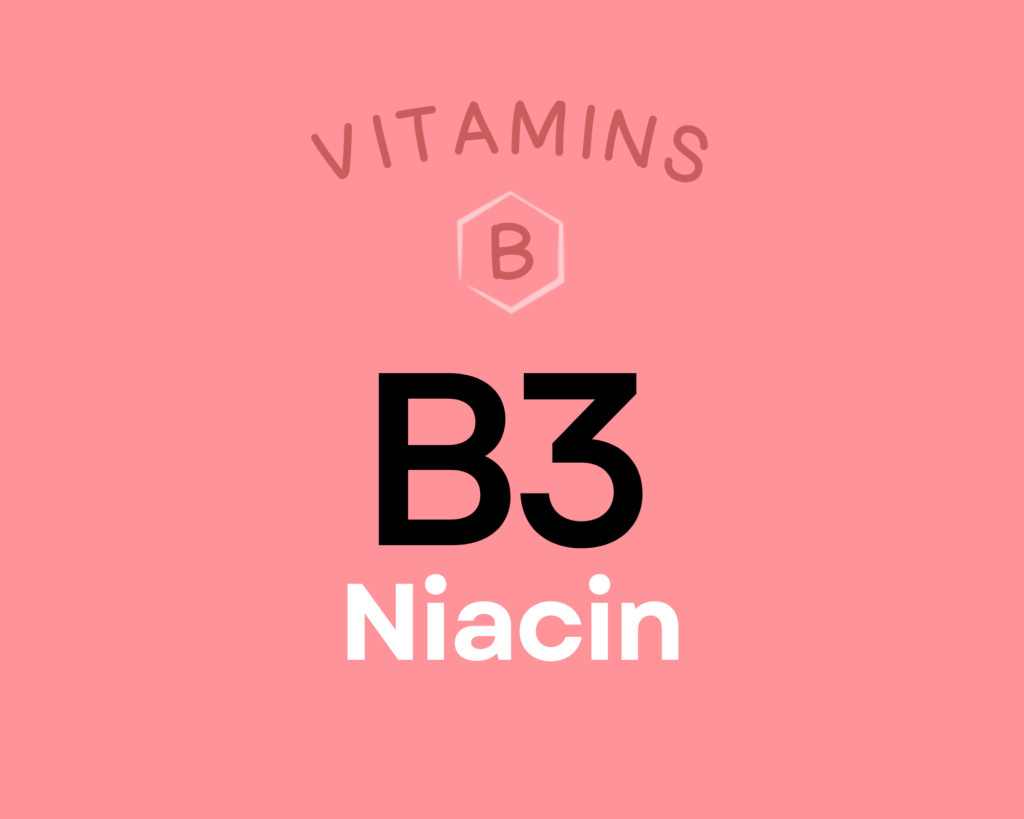
Niacin is a water-soluble B complex vitamin (vitamin B3) that’s needed to produce two very important coenzymes: nicotinamide adenine dinucleotide (NAD) and nicotinamide adenine dinucleotide phosphate (NADP). NAD and NADP are needed for over 400 enzymes involved in DNA repair, fatty acid synthesis, antioxidant systems, detoxification, and hormone synthesis, as well as the breakdown of fat, carbohydrate, protein, and alcohol. Niacin has therapeutic potential for cardiovascular disease and hyperlipidemia, and may also be protective against cancer and type 1 diabetes. Some research suggests it could benefit health outcomes for patients with HIV or schizophrenia as well. Learn more about niacin here.
Skipjack Tuna Provides 381.8 mg of Taurine
Skipjack tuna is a terrific source of taurine, providing 381.8 mg of taurine per 4-ounce serving!

Taurine is a non-proteinogenic amino sulfonic acid that supports neurological development, serves as a major component of bile (which helps to digest fats), and plays a role in water and mineral regulation within the blood (including through membrane stabilization and calcium signaling). Taurine also regulates the immune system and serves as an important antioxidant, and it plays a role in cardiovascular function and the development of skeletal muscle.
Skipjack Tuna Provides 91% DV Vitamin B12 (Cobalamin)
Skipjack tuna is rich in vitamin B12 (cobalamin), providing 91% of the daily value per 4-ounce serving!
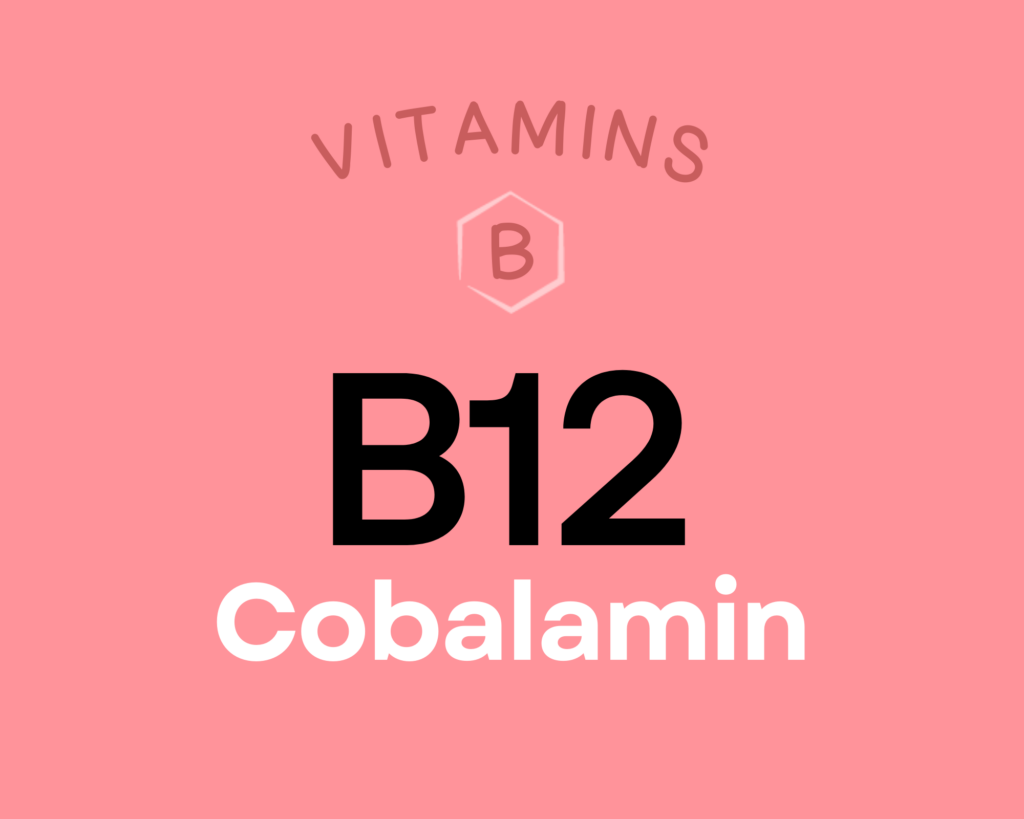
Vitamin B12 (cobalamin) is a water-soluble vitamin that serves as a cofactor for enzymes involved in energy metabolism, red blood cell production, DNA synthesis, neurotransmitter production, nervous system health, and folate metabolism. As a result of these roles, vitamin B12 is vital for maintaining brain and nervous system health, and may have a protective effect against dementia, Alzheimer’s disease, and depression. There’s also some evidence vitamin B12 may be cancer-protective, possibly through supporting folate metabolism (which then assists in repairing DNA damage). Learn more about vitamin B12 here.
Skipjack Tuna Provides 76% DV Selenium
Skipjack tuna is a fantastic source of selenium, providing 76% of the daily value per 4-ounce serving!
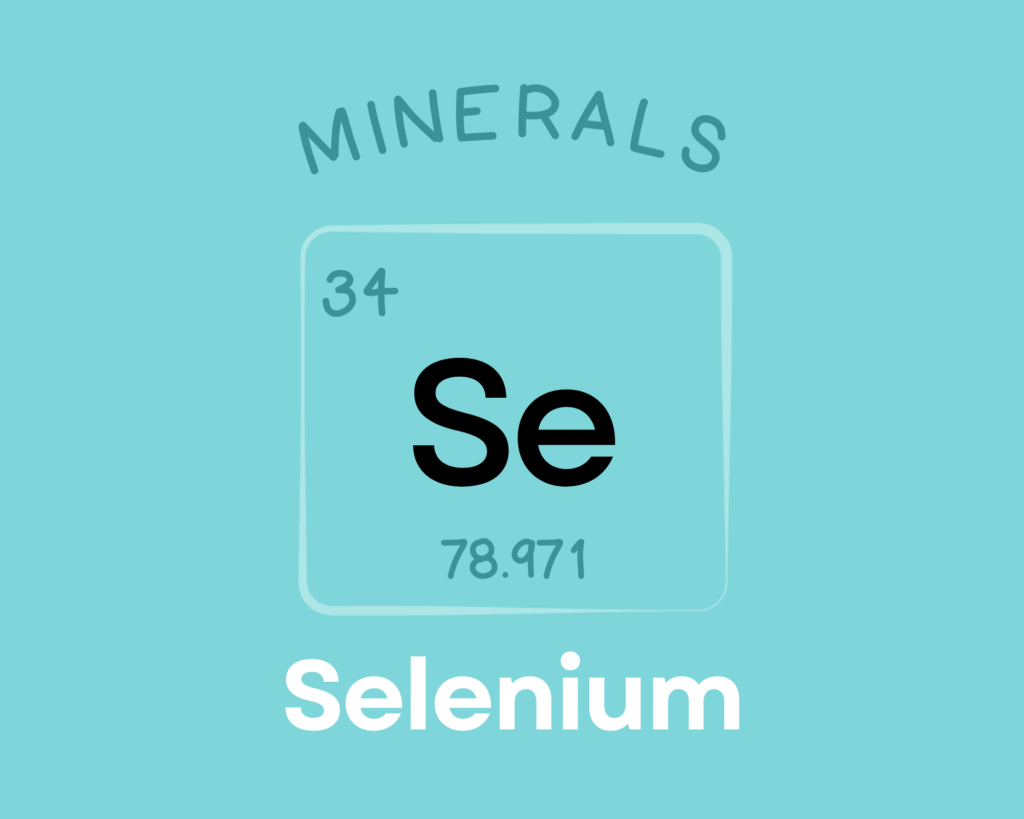
Selenium is a trace mineral needed by all mammals to sustain life. It serves as a component of the non-proteinogenic amino acids selenocysteine and selenomethionine, and also helps form over two dozen selenoproteins involved in reproduction, thyroid hormone metabolism, antioxidant defense, DNA synthesis, and immunity. Observational research suggests selenium could play a protective role against cancer, heart disease, asthma, and inflammatory bowel disease, although human trials have generally been lacking or contradictory. There’s also evidence that selenium can play a preventative role in asthma and inflammatory bowel disease, while also reducing mortality in patients with sepsis. Learn more about selenium here.
Skipjack Tuna Provides 58% DV Vitamin B6 (Pyridoxine)
Skipjack tuna is also a great source of vitamin B6 (pyridoxine), providing 58% of the daily value per 4-ounce serving!
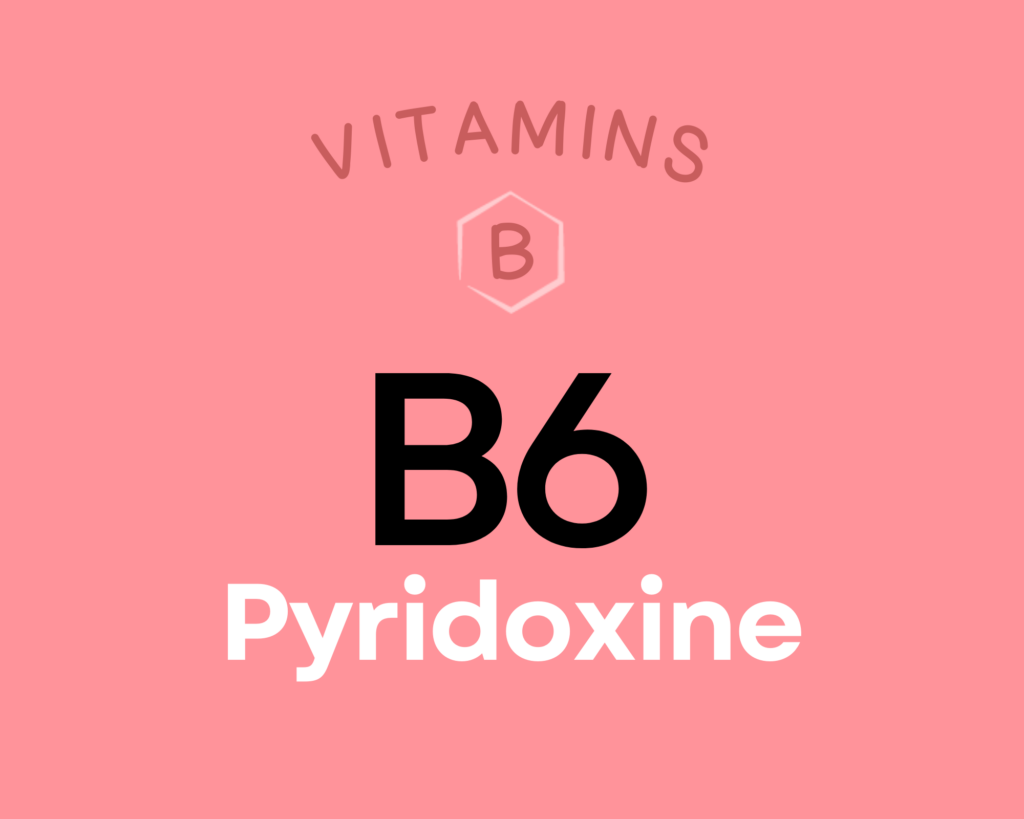
Vitamin B6 (pyridoxine) is a group of six water-soluble compounds with a similar chemical structure, all of which can be converted into their active form of pyridoxal 5’-phospate (PLP). Over 100 different enzymes require vitamin B6 in order to carry out their various functions in protein metabolism, fatty acid metabolism, neurotransmitter production, gluconeogenesis, hemoglobin synthesis, the release of glucose from glycogen, and energy metabolism (particularly the production of ATP in the Krebs cycle). Research suggests vitamin B6 may help protect against cardiovascular disease and certain cancers, could reduce the risk of depression among the elderly, and even reduce symptoms of morning sickness and PMS. Learn more about vitamin B6 here.
Skipjack Tuna Provides 25.3 g of Protein
Skipjack tuna is a fantastic source of protein, providing 25.3 g of protein per 4-ounce serving!
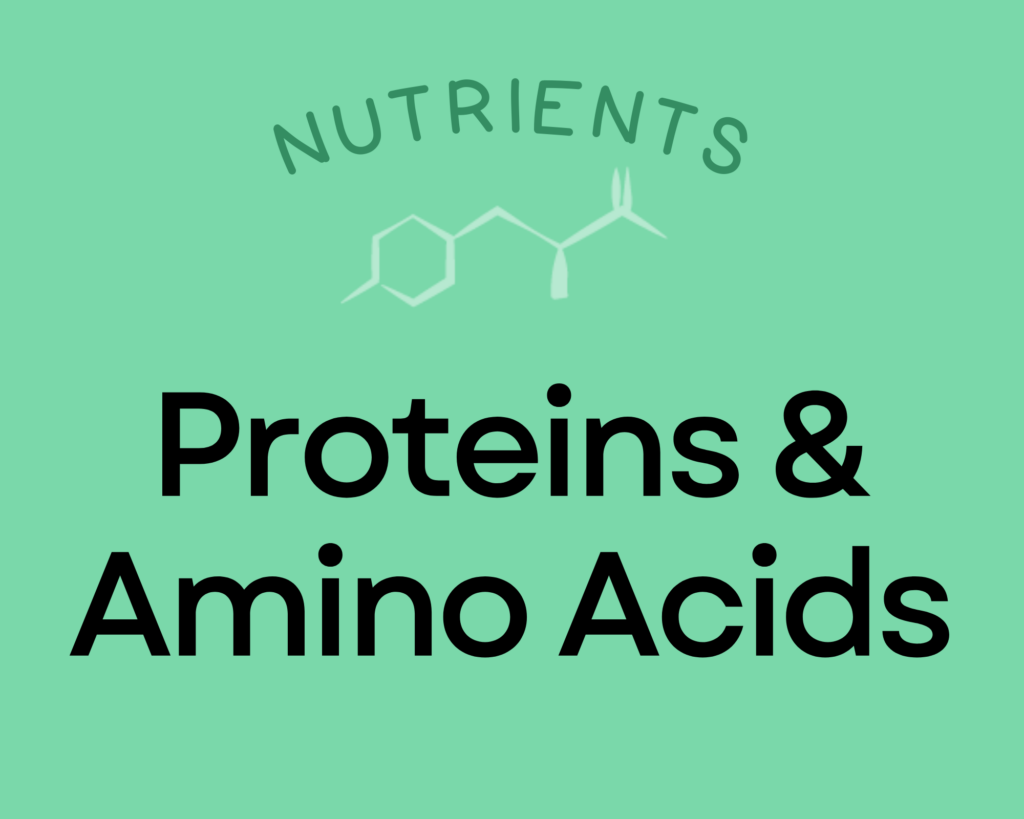
Proteins are the molecules that actually perform most of the various functions of life. In addition to being major structural components of cells and tissues, they have incredibly diverse roles from driving chemical reactions (e.g., enzymes) to signaling (e.g., some types of hormones) to transporting and storing nutrients. Dietary protein is necessary to supply the amino acid building blocks for all of the proteins in our bodies. The recommended daily allowance of protein is 0.36 grams per pound body weight (0.8 grams per kilogram of body weight). That amounts to 56 grams for a 150-pound person. However, it’s important to emphasize that this number is considered a minimum daily allotment, and there is no established upper limit. In fact, many studies have evaluated diets containing three to four times more protein than this minimum and proven benefits to weight management, body composition, hormone regulation, and cardiovascular health. These studies suggest that an optimal protein intake for most people is probably in the range of 1.2 to 1.8 grams per kilogram bodyweight (82 to 122 grams for that same 150-pound person), and that people who are very active may see the best results at even higher intake. Learn more about protein and amino acids here.
Skipjack Tuna Provides 22% DV Vitamin B7 (Biotin)
Skipjack tuna is an excellent source of vitamin B7 (biotin), providing 22% of the daily value per 4-ounce serving!
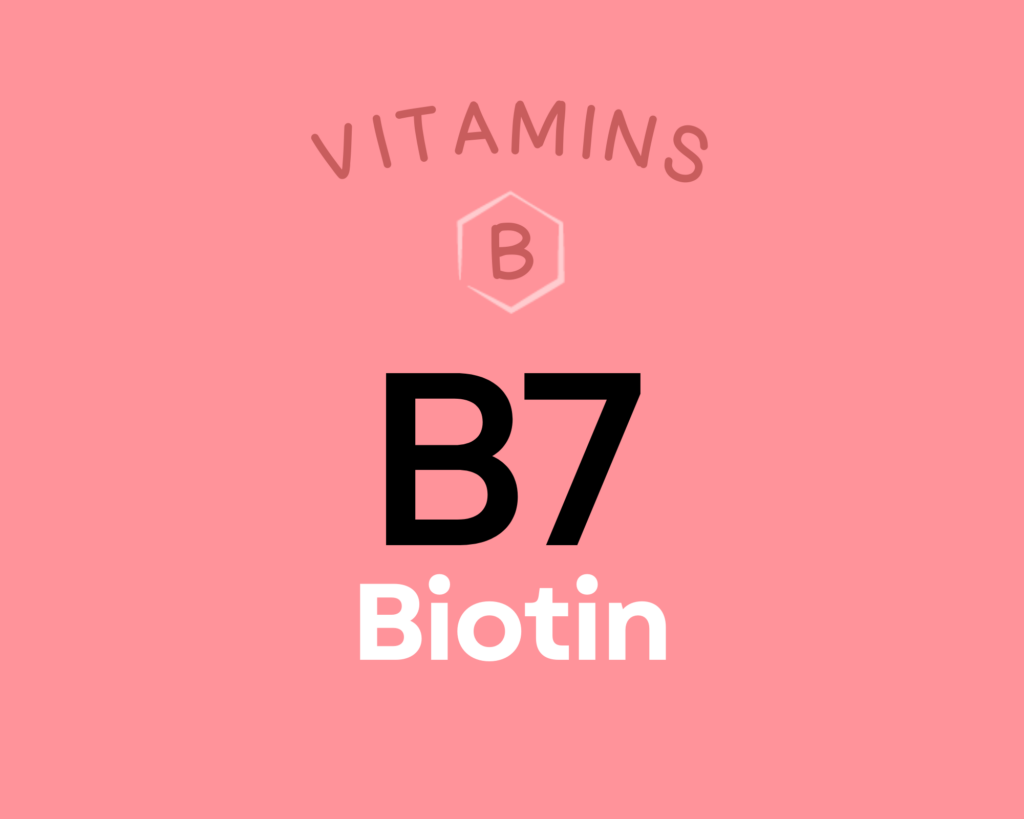
Biotin is a water-soluble B vitamin, also known as vitamin B7. Like other B vitamins, it plays an important role in energy metabolism (serving as a coenzyme for five carboxylase enzymes), neurotransmitter production, cellular function, and the function of various organs. Getting enough biotin can help support healthy nail and hair growth. It’s also particularly important during pregnancy, with low intakes increasing the risk of premature delivery and birth defects. There’s even some evidence biotin can benefit diabetics and reduce functional disabilities in people with multiple sclerosis. Learn more about biotin here.
Skipjack Tuna Provides 20% DV Phosphorus
Skipjack tuna is also an excellent source of phosphorus, providing 20% of the daily value per 4-ounce serving!
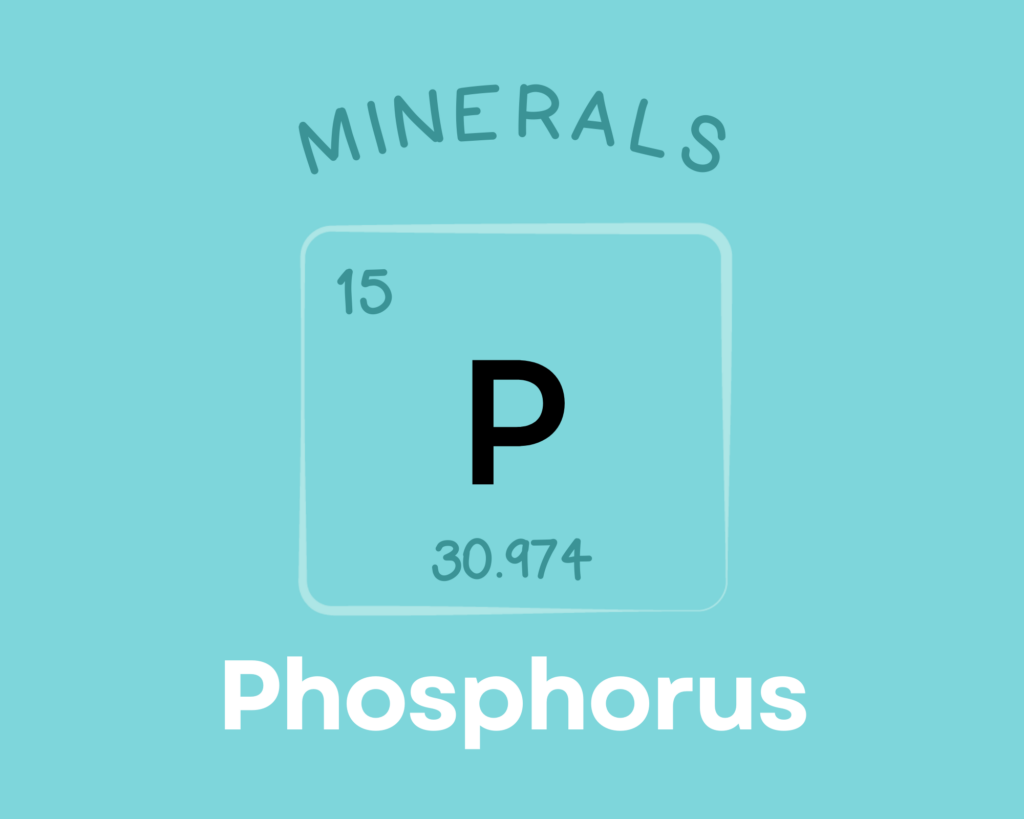
Phosphorus is an essential mineral that makes up about 1% of the total weight of the human body. Along with serving an important structural role for building nucleic acids and cell membranes, phosphorus is involved in numerous biological processes—including acid-base regulation, energy production, cell signaling, and bone mineralization. Excess phosphorus has been linked to a higher risk of cardiovascular disease, fractures, and osteoporosis, especially in the context of a low-calcium diet. Learn more about phosphorus here.
Learn What Foods Are the Best Sources of Every Nutrient

The Top 25 Foods for Every Nutrient
The Top 25 Foods for Every Nutrient e-book is a well-organized, easy-to-use, grocery store-friendly guide to help you choose foods that fit your needs of 43 important nutrients while creating a balanced nutrient-dense diet.
Get two “Top 25” food lists for each nutrient, plus you’ll find RDA charts for everyone, informative visuals, fun facts, serving sizes and the 58 foods that are Nutrient Super Stars!
Buy now for instant digital access.
How Much Skipjack Tuna Should We Eat Per Day?
Fish are nutrient-dense sources of highly-digestible complete protein and outstanding sources of important nutrients in which we are commonly deficient. Let’s just say this seafood is “off the hook!” (Pun intended.)
Fish and shellfish are not only nutrient-dense sources of highly-digestible gut-friendly complete protein and the best food sources of the very important long-chain omega-3 fatty acids, DHA and EPA, but they’re outstanding sources of important nutrients in which we are commonly deficient. Eating seafood reduces risk of cardiovascular disease, type 2 diabetes, obesity and some forms of cancer.
Fish is a great source of vitamins B1, B2, B3, B6, B9, B12 and E, zinc, phosphorus, magnesium, iron, copper, potassium and selenium, with oily cold-water fish also providing substantial amounts of vitamin A and vitamin D. Fish with bones remaining, such as canned salmon and sardines, are the best dietary sources of calcium in the food supply. And marine fish are an excellent dietary source of iodine.
In fact, every 100 grams per day of seafood decreases all-cause mortality by 7%. And, every 20 grams per day of fish decreases cardiovascular disease mortality by 4%. Aim to eat three or more servings of seafood weekly (and up to every meal!). Learn more about seafood here.
It’s always best to mix up the foods you eat day to day (aiming for a wide variety of different fish and shellfish throughout the week), and tuna definitely has a place at the table.
Easily track your servings of Nutrivore Foundational Foods!

The Nutrivore Weekly Serving Matrix
The Nutrivore Weekly Serving Matrix digital resource is an easy-to-use and flexible weekly checklist designed to help you maximize nutrient-density and meet serving suggestions of Nutrivore foundational foods, all without having to weigh or measure your foods!
Includes a 22-page instructional guide and downloadable interactive guides.
Buy now for instant digital access.
cITATIONS
Expand to see all scientific references for this article.
Chin SF, Liu W, Storkson J, Ha Y, Pariza M. Dietary sources of conjugated dienoic isomers of linoleic acid, a newly recognized class of anticarcinogens. Journal of Food Composition and Analysis. 1992 Sept(5):185-197. DOI:10.1016/0889-1575(92)90037-K
Clements RS Jr, Darnell B. Myo-inositol content of common foods: development of a high-myo-inositol diet. Am J Clin Nutr. 1980 Sep;33(9):1954-67. doi: 10.1093/ajcn/33.9.1954. PMID: 7416064.
Fineli Finnish Food Composition Database: Tuna, average
Frida Food Database. National Food Institute, Technical University of Denmark: Tuna, raw
Froger N, Moutsimilli L, Cadetti L, Jammoul F, Wang QP, Fan Y, Gaucher D, Rosolen SG, Neveux N, Cynober L, Sahel JA, Picaud S. Taurine: the comeback of a neutraceutical in the prevention of retinal degenerations. Prog Retin Eye Res. 2014 Jul;41:44-63. doi: 10.1016/j.preteyeres.2014.03.001. Epub 2014 Apr 8. PMID: 24721186.
Kubo H, Fujii K, Kawabe T, Matsumoto S, Kishida H, Hosoe K. Food content of ubiquinol-10 and ubiquinone-10 in the Japanese diet. Journal of Food Composition and Analysis. 2008. Vol 21(3):199-210. https://doi.org/10.1016/j.jfca.2007.10.003.
USDA Food Central Database: Fish, tuna, fresh, skipjack, raw
Watanabe T, Kioka M, Fukushima A, Morimoto M, Sawamura H. Biotin content table of select foods and biotin intake in Japanese. Int J Anal Bio-Sci. 2014. Vol 2(4):109-125.


